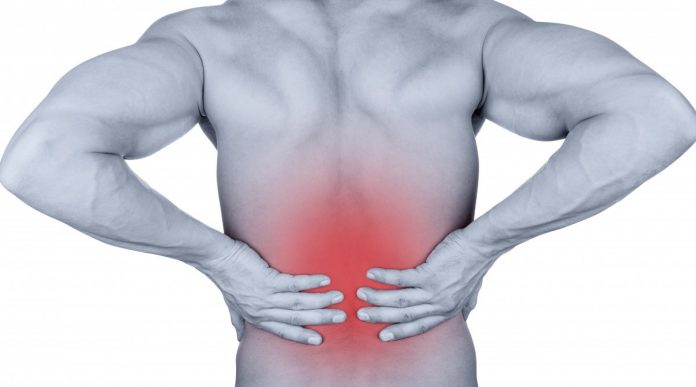
According to the Global Burden of Disease 2010, lower back pain is one of the leading causes of disability. As one of the most common reasons that employees give out when they miss work, most cases of back pain are non organic and mechanical. This means that they are not as a result of an infection, cancer, inflammatory arthritis and fracture.
As one of the most complicated part of the body composed of muscles, joints, ligaments and bones, one is able to strain their back muscles, irritate their joints or rupture their disks. All these have been found to be a leading cause of back pain.
There are certain sleeping positions that can add pressure around your shoulders, knees, heels, hips and lower back resulting in back pain. By selecting the right sleeping positions, not only will you sleep better but lower back pain.
Here are 7 ways to sleep better when you have lower back pain.
Set up a night time routine
It is important to have a night routine just before heading to bed. Doing so will ensure that your sleep quality is enhanced. Here is a sample night routine to enhance your sleep quality. Engage in yoga a few hours before bed. Different yoga poses help to calm your mind and stretch your muscles. Furthermore, it calms your central nervous system.
Take a hot shower as the heat helps to calm your muscles and take the tension away. On the other hand, drink a cup of infusion or tea for example Chamomile tea or warm lemon water. Avoid binge watching and shut off all your electronics before going to bed.
Invest in the right mattress
Using the wrong mattress can result in lower back pain. In addition, it can worsen the condition due to lack of support. Poor support from a mattress strains your muscles, results in poor sleeping posture and does not help your spine alignment. It is important to match your sleeping preferences with the right mattress if you want to enhance your sleeping comfort and lower back pain.
What you ought to know is that sleeping on a mattress that is too firm may result in aches and pain especially around the pressure points. Selecting a medium firm mattress allows your shoulders and hips to sink in a little bit. If you are a side sleeper, choose a mattress with a slight softness to cushion your hips and shoulders. For better support, select memory foam or a mattress with thicker padding.
Relax with music
Music therapy has the potential of putting a tear on your eyes and a smile on your face. Music also motivates us to overcome any challenges as well as making one laugh. Since music puts a smile on your face and a smile adds more years to your life, don’t be surprised to know that it can also reduce pain perception.
Listening to music has been found to enhance comfort, manage pain and lower stress for people of all ages and genders. I am not talking about loud music but soft music. Today, medical facilities have implemented music therapy to promote physical rehabilitation, elevate the patients’ moods and calm patients down. Listening to music before bed will help to improve sleep quality and lower pain perception.
Also read: unique weight loss supplement PhenQ >>
Turn off all electronics
Shutting off all your electronics an hour or so before going to bed will help lower your back pain. I don’t mean pressing the power button on the electronic device, I mean shutting off the power completely to the device. IN the end, the red or blue light should not be on. Lights generated by standby electronic devices hinder your sleep quality. This will confuse your body in terms of what time of day it is. As a result, you will find it hard to sleep well. This will prompt you to start tossing and turning finally impacting your spine and its alignment. In the end, a lot pressure will be placed on your back resulting in back pain.
Change your sleeping position
Did you know that lower back pain can be brought about by your sleeping position? How you sleep at night strains your muscles and places stress on your spine resulting in back pain. To lower back pain and enjoy your sleep better, practice the following sleeping positions.
If you are a side sleeper, place a pillow between your knees. What you ought to know is that sleeping on your side does not offer lower back pain relief. The pillow between your knees does the trick. It helps to keep your hips, spine and pelvis in better alignment.
Sleep in a fetal position especially if you have a herniated disk. Sleeping in this position helps to open the space between the vertebrae. Other sleeping positions to practice include sleeping on your back with your pillow placed under your knees.
Get regular massages
Massages helps to relax your muscles, promote circulation, boost the production of endorphins and acts as a stress reliever. Majority of us spend long hours in front of a computer working. Poor back posture strains the back muscles and discs leading to pain. Before you begin your massage, relax, stretch and breathe.
You can perform DIY massage at home or book an appointment with a professional massage therapist to massage you at home.
Avoid staying long in bed
Tempted to sleep more than the recommended 8 hours a day? Don’t! Sleeping for more hours has an effect on neurotransmitters including serotonin. If you oversleep during the day, you will find it hard to sleep during the night. Lack of sleep during the night will result in you tossing and turning on your bed which will result in morning back pain. Morning back pain is a difficult problem which has subtle chronic causes. Causes of morning back pain include inflammaging, awkward sleeping postures, inflammatory back pain and fibromyalgia. To avoid morning back pain, don’t over sleep, consume an anti inflammatory diet, keep fit and work on your anxiety.
Read our full review about one of the best workout supplements: BlackWolf >>



























